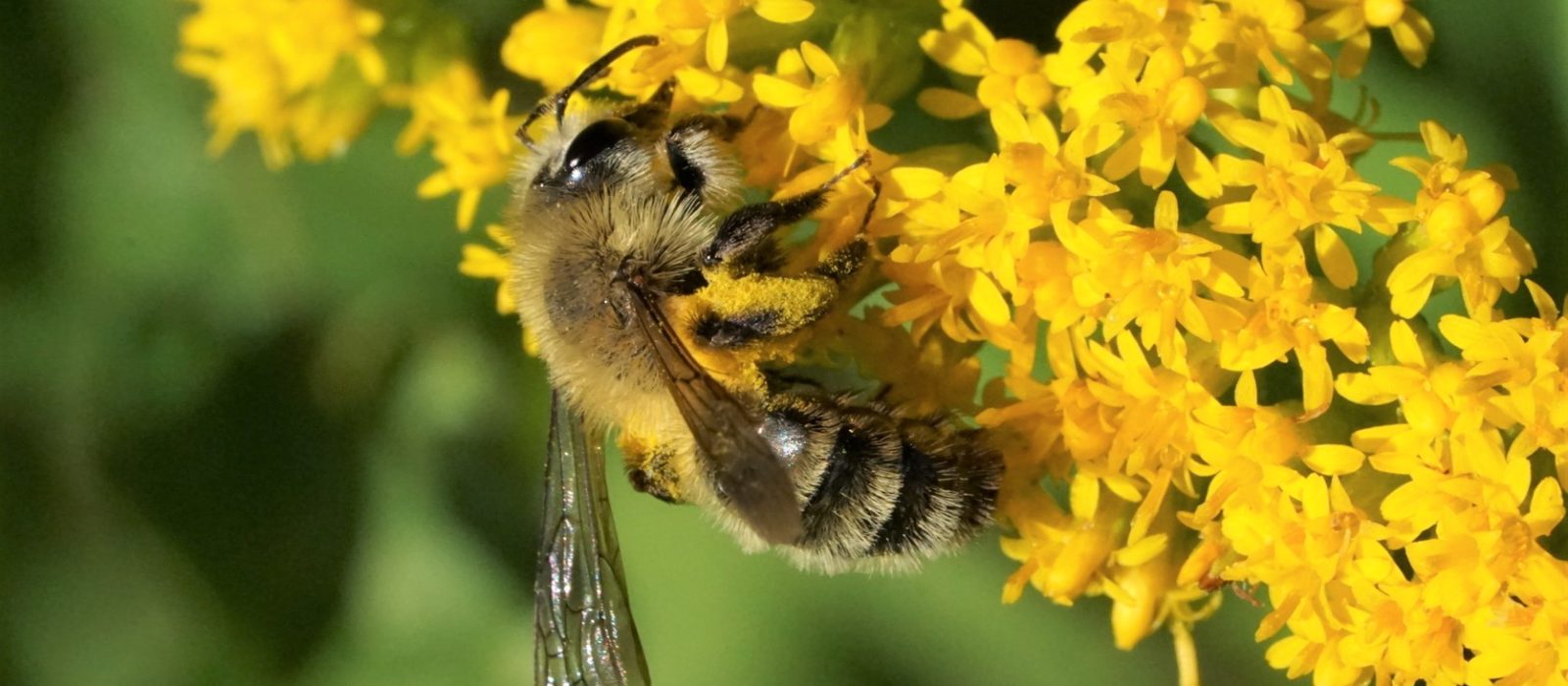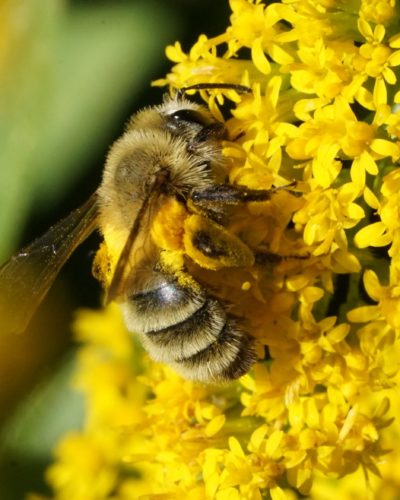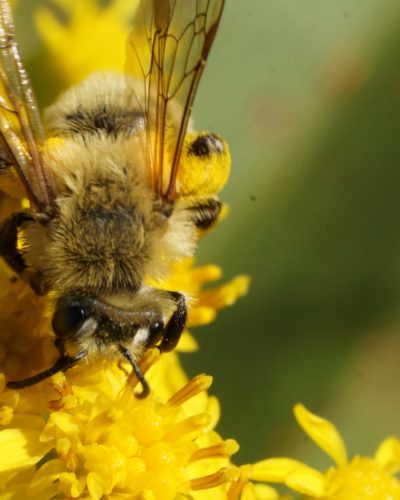This distinctive member of the large genus Andrena is a fairly common bee on Martha’s Vineyard, associated with goldenrod and occurring quite widely. Consistent with the flowering period of its favored pollen source, A. hirticincta is found in late summer and early fall; the ten records of this species in iNaturalist range between September 5 and October 7, and records from the landmark 2010-2011 bee study by Paul Goldstein and John Ascher all date from September. I suspect this species occurs later into the fall, however, and looking for this bee into mid- or even late October might expand the time frame in which it’s known to be active.
While Andrena bees can be difficult to ID – even from specimens, let alone under field conditions! – hirticincta is easily recognized by the heavy, complete bands of hair that line the edges of its abdominal segments (“hirticincta” means “hairy-banded”). Also, the body hair on this bee is faintly greenish in color, noticeably different with practice from the shades of yellow shown by other fall-flying Andrenas. This is a fairly large bee by Andrena standards, averaging a bit over a centimeter in length. In iNaturalist, A. hirticincta is the most commonly reported Vineyard species in its genus, though this surely reflects this bee’s distinctiveness as well as its actual abundance. But it can be looked for anywhere on the Vineyard that goldenrod occurs: iNat records span from Oak Bluffs to Aquinnah, and I have specimens from several locations in Edgartown, as well.
Like other members of its genus, A. hirticincta is a solitary bee, with each female constructing her own nest. Not much seems to be known about the nesting habits of this bee, although its status on Martha’s Vineyard suggests that it’s comfortable nesting in our generally sandy soils. Buggide.net reports that a typical Andrena nest is “a vertical tunnel lined with a shiny water-proof secretion and side cells,” and this presumably describes the nest of this species as well.
The preference of this bee for goldenrods, both Solidago and Euthamia, is quite striking; I don’t think I’ve ever found a female hirticincta on anything else. I’ve observed this species foraging in habitats ranging from dry sandplain to shrub swamp to a residential yard; it must either be quite tolerant of varying conditions or else able to disperse widely from whatever its favorite nesting habitat is. More observations will help reveal the ecology of this bee on the Vineyard, so keep an eye out for it on goldenrod on the remaining sunny days of this season.
Matt Pelikan is the director of the Martha’s Vineyard Atlas of Life project at BiodiversityWorks.



